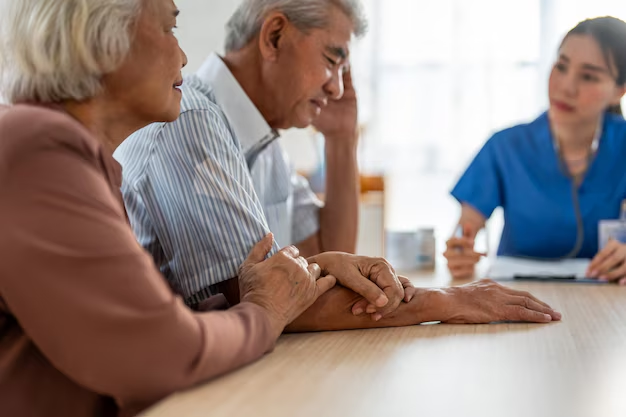Understanding Parkinson’s: How to Test For Symptoms at Home
Parkinson's disease is a progressive neurological disorder characterized by tremors, stiffness, and difficulty with balance and coordination. While a definitive diagnosis can only be made by a healthcare professional, understanding your own symptoms and knowing what to look out for can empower you to seek help sooner and improve your quality of life.
Recognizing the Early Signs of Parkinson's
Identifying early symptoms is crucial for anyone concerned about Parkinson's. These include:
- Tremors: Notable shaking that often begins in the hands or fingers.
- Bradykinesia: Slowness of movement, making daily tasks take longer.
- Muscle Stiffness: Muscle stiffness can occur in any part of the body, leading to restricted range of motion and pain.
- Impaired Posture and Balance: A stooped posture and increased balance problems.
- Loss of Automatic Movements: Reduced ability to perform unconscious movements, like blinking or swinging your arms while walking.
Each of these symptoms can vary in intensity and onset, and they are often subtle at first.
Self-Assessing Parkinsonian Symptoms
While no home test can replace an expert diagnosis, you can monitor and assess your symptoms to inform discussions with your healthcare provider.
Tremor Test
- Sit in a comfortable chair and rest your hands on your lap, palms up.
- Watch your hands closely for tremors.
- Evaluate if the tremor worsens with stress or decreases when performing purposeful movement, like reaching for an object.
Bradykinesia Evaluation
- Finger Tap: Quickly tap the thumb and forefinger of one hand together for 10 seconds. Note any difficulty or slowness and repeat with the other hand.
- Foot Tap: Sit down and rapidly tap your toes on the ground. Compare the movement ease and speed of each foot.
Balance and Posture Check
- Posture: Stand sideways in front of a mirror to observe your posture. A hunched back or shoulders could be a concern.
- Balance: Stand on one leg and count how long you can maintain balance. Repeat on the opposite leg.
Assessing Muscle Stiffness
- Move your joints through their full range of motion, noting any stiffness or discomfort.
- Pay attention to difficulty or pain while performing daily tasks such as buttoning a shirt or opening jars.
Evaluate Automatic Movements
- Note if others mention you blink less or if your facial expressions seem less expressive (sometimes noted as "masked face").
- Check whether one or both arms do not swing naturally while walking.
What To Do If Symptoms Are Present
If your self-assessment indicates potential signs of Parkinson’s, here are practical next steps:
- Track Symptoms: Keep a diary of the symptoms noted, including their frequency and intensity.
- Consult a Professional: Schedule an appointment with your healthcare provider for a thorough evaluation.
- Regular Monitoring: Regularly revisit these tests to track any changes or progression in symptoms.
- Lifestyle Management: Consider lifestyle changes that may help manage symptoms, such as regular exercise and a balanced diet.
The Role of Professional Diagnosis
Seeking professional medical evaluation is critical. Diagnostic tools like neurological exams, medical history review, and sometimes brain scans (like DaTscans) are needed to rule out other conditions and confirm Parkinson’s.
Additional Information and Context
The Importance of Early Detection
While Parkinson’s is currently incurable, early detection can:
- Initiate symptom management strategies earlier.
- Slow progression through lifestyle changes and medication.
- Allow for better planning and support network establishment for emotional and functional needs.
Non-Motor Symptoms to Recognize
Parkinson’s can present with non-motor symptoms which impact quality of life significantly.
- Sleep Disturbances: Insomnia or excessive daytime sleepiness.
- Mood Disorders: Depression or anxiety.
- Cognitive Changes: Difficulty with memory or poor decision-making.
- Loss of Smell: An early sign often missed, but quite prevalent in Parkinson’s patients.
Empowerment Through Knowledge
Knowing what to look out for, assessing symptoms consistently at home, and knowing when to reach out to healthcare professionals empowers you to maintain control over your health journey. Understanding the complexity of Parkinson's and its broad spectrum of symptoms can make a significant difference in managing the disease more effectively.
Key Takeaways for Self-Testing and Management of Parkinson’s
- 🕒 Track Symptoms: Use journals or apps to record daily symptoms and triggers.
- 📞 Seek Professional Guidance: Consult with neurologists or Movement Disorder specialists when symptoms are noted.
- 🏋️ Prioritize Movement: Incorporate daily physical activities to enhance mobility and coordination.
- 🍏 Lifestyle Adjustments: Focus on nutrition and mental health for holistic wellbeing.
- 🔍 Stay Informed: Regularly educate yourself on Parkinson’s to better understand and manage symptoms.
Understanding symptoms and involving healthcare professionals at the earliest signs allows you to leverage existing resources and strategies to maintain better control over your life with Parkinson’s.

Related Articles
- Are There Environmental Causes Of Parkinsons
- Can Alcohol Cause Parkinson's
- Can Concussions Cause Parkinson's
- Can Females Get Parkinson Disease
- Can Head Trauma Cause Parkinson's
- Can Parkinson Disease Cause Dizziness
- Can Parkinson's Affect Eyesight
- Can Parkinson's Affect Memory
- Can Parkinson's Affect Speech
- Can Parkinson's Affect Vision